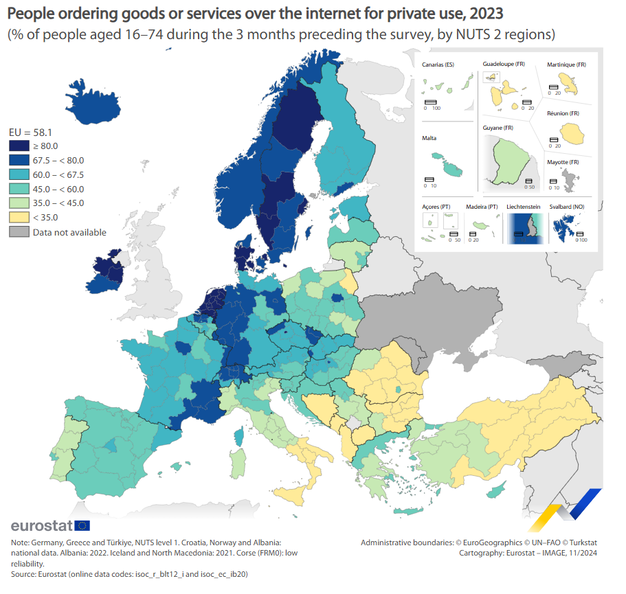In 2023, 58.1% of people aged 16-74 in the EU reported that they had bought or ordered goods or services over the internet in the 3 months preceding the survey.
The share was higher than the EU average (58.1%) for every region of Czechia, Denmark, Ireland, France (except the outermost regions), the Netherlands, Slovakia, Finland, Sweden, Estonia, Luxembourg and Malta.
 Photo: Dreamstime.
Photo: Dreamstime.
By contrast, the share of the population making use of e-commerce was below the EU average for every region of Bulgaria, Greece, Italy, Lithuania, Portugal, Romania, Slovenia, Croatia (national data), Cyprus and Latvia.
In 2023, there were 21 EU regions where at least 80.0% of people aged 16–74 had bought or ordered goods or services online for private use (darkest shade of blue in the map): 11 regions in the Netherlands, 4 in Sweden, 3 in Denmark, followed by 2 regions from Ireland and one region from Czechia. The top 3 regions, with the highest shares of people buying or ordering goods or services over the internet, were all located in the Netherlands – Utrecht (87.8%). Noord-Holland (86.4%) and Overijssel (85.9%).
 Photo: Eurostat.
Photo: Eurostat.
There were 20 regions in the EU where less than 35.0% of the population bought or ordered goods or services over the internet in 2023 (yellow shade in the map): 6 regions in Romania, 5 in Italy and also in Bulgaria, 3 outermost regions of France and a single region in Poland. Finally, in only 2 EU regions, fewer than 1 in 5 people made use of e-commerce – the Bulgarian region of Yugoiztochen (19.8%) and the French outermost region of Guadeloupe (18.7%).
More information:
Eurostat
www.ec.europa.eu
